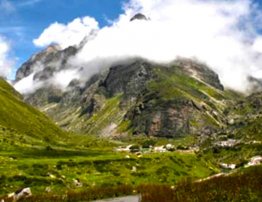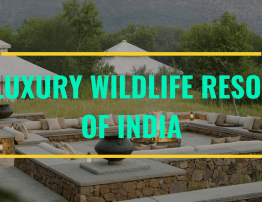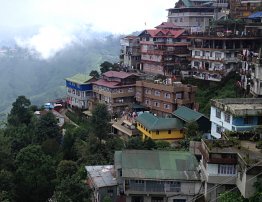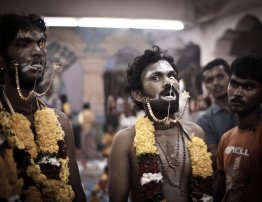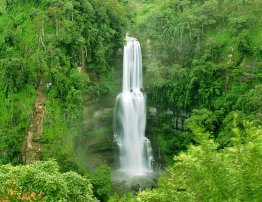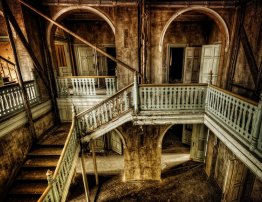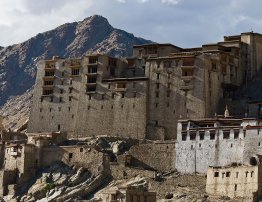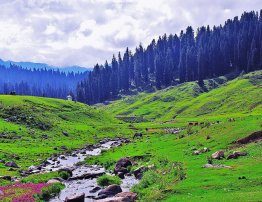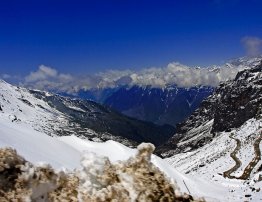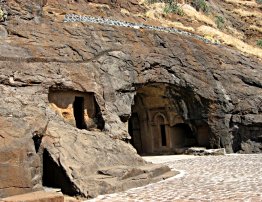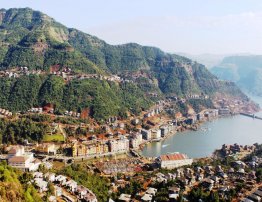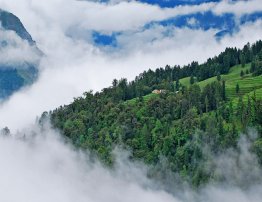Jodhpur
Introduction:
Jodhpur is the second largest city in the northern Indian state of Rajasthan. Jodhpur is known as Sun City for the bright sunshine it enjoys throughout the year. But its more famous sobriquet is blue city; known so because of the bluish hue of uniformly whitewashed houses in the town. The city dominated by the massive Mehrangarh fort on a rocky hill is charming with its wealth of historic attractions and colourful markets which specializes in antiques. It is still one of the leading centers of wool, cattle, camels and salt. Jodhpur is a popular tourist destination, featuring many beautiful palaces, forts, and temples, apart from a stark, scenic desert landscape.
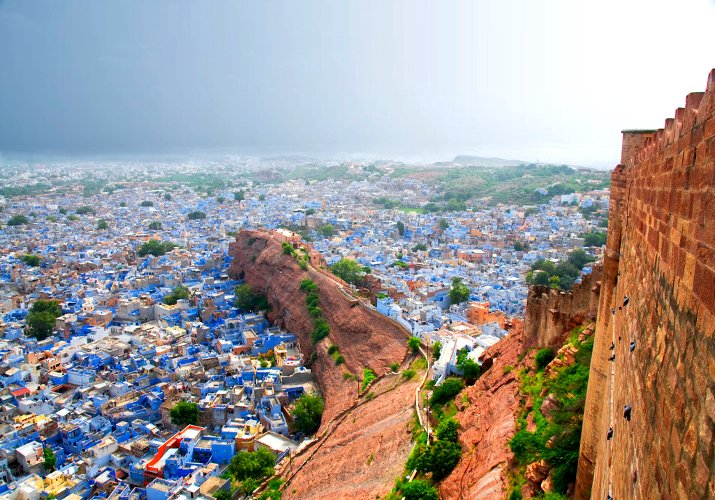
Photo Credit: Miguel M.
Destination Facts:
Location: Rajasthan, District Jodhpur
Altitude: 231 Meters
Temperature: (summer 24 to 45°C) & (winter 5 to 20°C)
Languages spoken: Hindi, Rajasthani and English.
Getting there:
Nearest Airports: Jodhpur airport is the nearest airport.
Main Railway Station: Jodhpur itself has a railway station.
Main Bus Station or Road: Jodhpur is well-connected to all cities in Rajasthan by state owned bus services.
Distance of a few Major Towns from Jodhpur:
Sojat-92 km, Balotra-104 km, Falna-138 km, Ranakpur-207 km.
Places of Tourist interest:
Jaswant Thada:
It is situated on the left side of Fort Mehrangarh, in fact between the fort and the city. Jaswant Thada is an architectural marvel, built with expertly carved sheets of white marble. The marbles are very thin and polished and carved in such a way that the outside surface emits a glow during day time.
Mehrangarh Fort:
Mehrangarh Fort is one of the most imposing and largest forts not only in Jodhpur but in the whole India. The walls of the fort have a height of 36 metres and a width of 21 metres. There are several palaces inside the fort. The fort looks magnificent from the city and if you go inside the fort, the fort reciprocates the favour the city looks unbelievably wonderful from the fort.
Umaid Bhawan Palace:
The palace is located in the southern part of Jodhpur city. The present day king of Jodhpur, though without any constitutional power, still lives in this palace. Almost half of the palace has been converted into a hotel and another part of the palace into a museum.
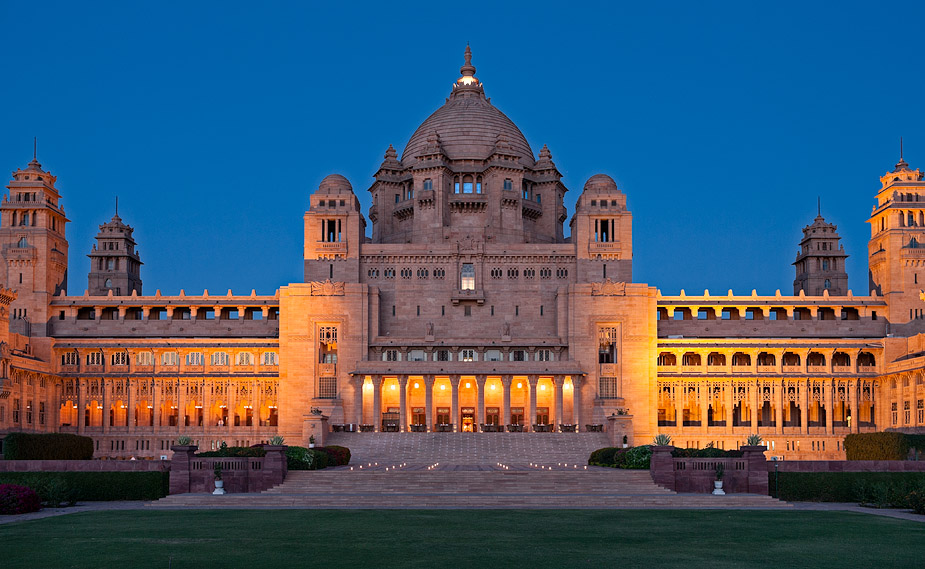
Umaid Bhawan Palace Jodhpur
Balsamand Lake:
Balsamand Lake is the most popular picnic spot around Jodhpur. It is an artificial lake; The Lake has a length of almost one kilometer, breadth of approximately 50 metres and a depth of 15 meters. Adjacent to the lake stands one of the several imposing palaces in the region, Balsamand Lake Palace. The lake is surrounded by 300 acres of lush green gardens that house groves of trees like mango, pomegranate, guava and plum and several animals and birds like jackal and peacock.
Mahamandir Temple:
It is also famous for its intricate works in stone, in which yogic postures are carved out. There are plenty of ancient shrines and houses located in the premises of Mahamandir Temple. The walls and pillars of the temple are studded with expertly designed traditional motifs.
Takhat Sagar Lake:
Takhat Sagar Lake can be considered as a part of the vast Kailana Lake. Takhat Sagar Lake is situated near the Takhat Sagar Hills, which is about 10 kilometers away from the main city of Jodhpur. The secluded Siddhnath Shiv temple is situated between the Takhat Sagar Hills. The isolated temple attracts a large number of devotees each year despite the poor road that connects the temple with the city.
Mandore Gardens:
The garden contains cenotaphs of former Marwar kings. Unlike normal cenotaphs in the region, the cenotaphs in Mandore are built like traditional Hindu temples. The cenotaphs are made in red sandstone and generally have four elegant storeys. These cenotaphs are surrounded by a beautifully landscaped garden. The garden also contains a ruined fort and palace.
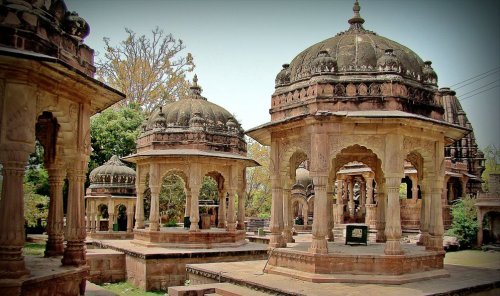
Mandore Gardens-Jodhpur
Zenana Mahal:
The palace, said to have been guarded by eunuchs during the era of the king's rule, was the place where the many wives of the king and their cohorts spent most of their merry time. The building even now has an exotic and sensuous charm to it, with its smooth sandstone screens and attractive rock carvings. In the wall near the gate, scars made by cannon balls from the old battle can still be seen.
Loha Pol:
Loha Pol (the gate of iron) is another historic gate in the magnificent Fort Mehrangarh, like Jai Pol. It was through this gate that the bereaved queens ran into flames to commit 'sati' immediately after the death of their husbands. The 'hand prints' of those queens can still be seen in Loha Pol.
Mehrangarh Fort Museum:
It is considered as one of the best maintained museums in Rajasthan, where one can find several interesting things from a previous age: from an array of palanquins used by the kings to high quality paintings from the royal collection. There are 14 display rooms in the museum. In these rooms one can also see the weapons, ornaments, and costumes. There are four period rooms which are decorated exactly as in the royal age.
Phool Mahal:
Phool Mahal (means 'the palace of flowers') is now the most popular period room in Mehrangarh Fort Museum. The other attractions in Phool Mahal, such as the paintings, portraits and raga mela, were the contribution of a later king, Jaswant Singh.
Umaid Bhawan Palace Museum:
The museum is small compared with the one in Mehrangarh Fort. Nevertheless, several artifacts and antiques are on display in this western style building. Weapons used by the kings, a mind-boggling number of stuffed leopards, which were hunted down by the erstwhile kings, a banner said to be presented by Queen of England and an amazing collection of antique clocks are the major attractions of the museum.
Eating out:
Makhaniya Lassi (a drink made with curd and sugar), Mawa Kachori, Pyaaj Kachori and Mirchibada (a hot and spicy food).
Getting around the destination:
Auto rickshaws, cycle rickshaws and private taxis are the ways of getting around the city.
Shopping Areas & Entertainment:
Lacquer work, camel and sheep wool carpets and other handicrafts, cotton and woolen handlooms - cushion covers, durries, shawls, carpets, clothes, and knick-knacks made by the people.
Best time to visit:
October to March is the best time to visit the destination.
Festival:
The famous festival in Jodhpur is the Marwar Festival that is held in October/November in Jodhpur.
 Use Coupon code
Use Coupon code



